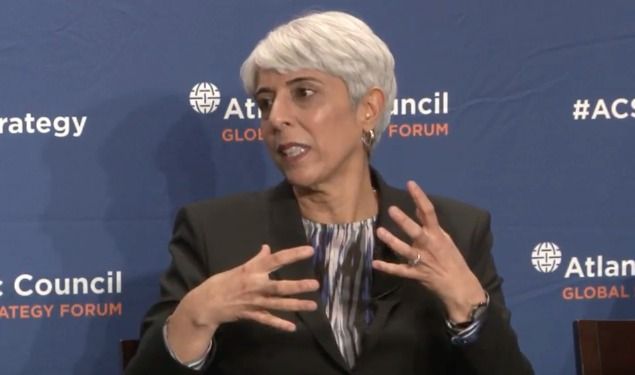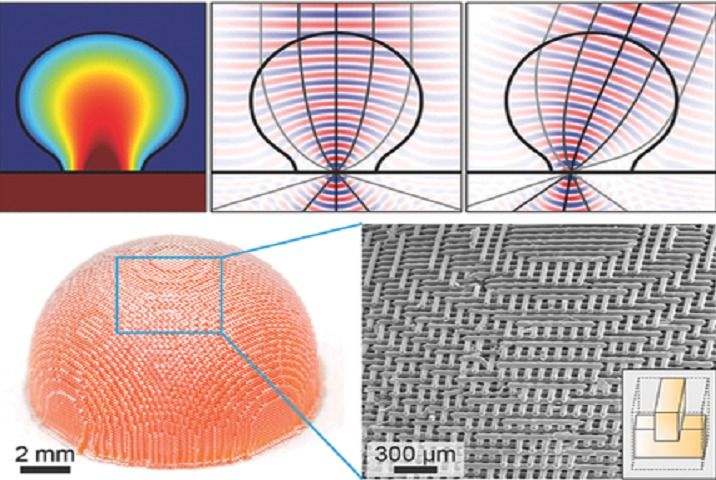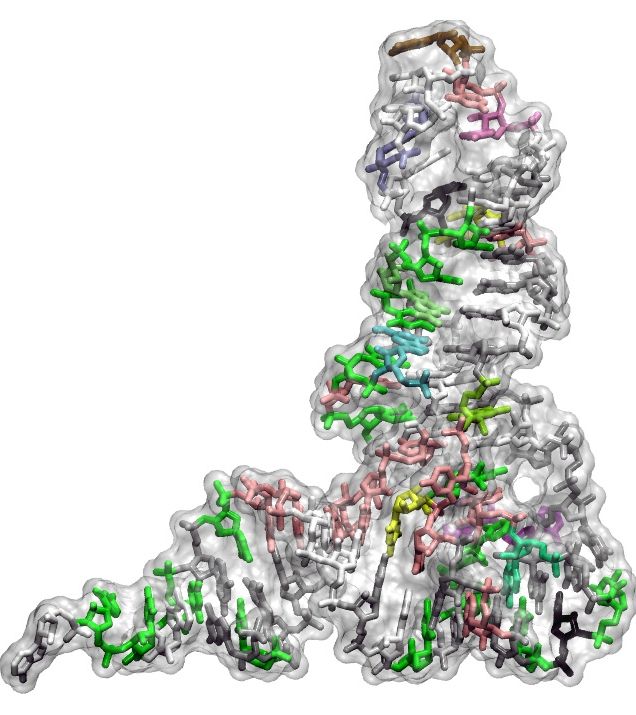Page 11210
May 2, 2016
10 responses to “Hacking Aging”
Posted by Maria Konovalenko in categories: biotech/medical, law, life extension, mathematics
What would you say if I told you that aging happens not because of accumulation of stresses, but rather because of the intrinsic properties of the gene network of the organism? I’m guessing you’d be like: surprised .
So, here’s the deal. My biohacker friends led by Peter Fedichev and Sergey Filonov in collaboration with my old friend and the longevity record holder Robert Shmookler Reis published a very cool paper. They proposed a way to quantitatively describe the two types of aging – negligible senescence and normal aging. We all know that some animals just don’t care about time passing by. Their mortality doesn’t increase with age. Such negligibly senescent species include the notorious naked mole rat and a bunch of other critters like certain turtles and clams to name a few. So the paper explains what it is exactly that makes these animals age so slowly – it’s the stability of their gene networks.
What does network stability mean then? Well, it’s actually pretty straightforward – if the DNA repair mechanisms are very efficient and the connectivity of the network is low enough, then this network is stable. So, normally aging species, such as ourselves, have unstable networks. This is a major bummer by all means. But! There is a way to overcome this problem, according to the proposed math model.
May 2, 2016
DARPA director cautions on AI’s limitations
Posted by Karen Hurst in categories: military, robotics/AI
Another person this time DARPA (Arati Prabhakar) speaks about the truth on AI and it’s real world limitations.
The Pentagon’s R&D arm is heavily invested in driving the future of artificial intelligence and machine learning, but the program’s director warned the technology isn’t without its limitations.
May 02, 2016.
Continue reading “DARPA director cautions on AI’s limitations” »
May 2, 2016
Raytheon developing technology to make software “immortal”
Posted by Karen Hurst in categories: computing, engineering, life extension, military
Making software immortal; Raytheon is trying to make it a reality.
CAMBRIDGE, Mass., May 2, 2016 /PRNewswire/ — A team led by Raytheon BBN Technologies is developing methods to make mobile applications viable for up to 100 years, despite changes in hardware, operating system upgrades and supporting services. The U.S. Air Force is sponsoring the four-year, $7.8 million contract under the Defense Advanced Research Projects Agency’s Building Resource Adaptive Software Systems program.
“Mobile apps are pervasive in the military, but frequent operating system upgrades, new devices and changing missions and environments require manual software engineering that is expensive and causes unacceptable delays,” said Partha Pal, principal scientist at Raytheon BBN. “We are developing techniques to eliminate these interruptions by identifying the way these changes affect application functionality and modifying the software.”
Continue reading “Raytheon developing technology to make software ‘immortal’” »
May 2, 2016
Northwestern University Research Group Uses 3D Printing to Create Terahertz Lens
Posted by Karen Hurst in categories: 3D printing, 4D printing, energy, nanotechnology
The Illinois-based Northwestern University has utilized 3D printing technology to research a variety of vital applications, from 3D printing fuel cells to 4D printing materials on the nanoscale. Now, researchers from the prestigious institution are looking at 3D printing technology through a unique lens—a terahertz lens, to be exact. Generally unknown within the electromagnetic spectrum, hidden in between the more commonly known wavelengths of microwaves and infrared, lies the information-packed terahertz spectrum. The terahertz is not only a forgotten frequency, it’s also rarely studied, let alone well understood, yet it has high value in applications regarding imaging and communications.
One research group, led by Northwestern University’s Cheng Sun, has used metamaterials and a unique style of SLA technology called projection micro-stereolithography to manufacture a novel lens capable of working with terahertz frequencies. The 3D printed terahertz gradient-refractive index lens has better imaging capabilities than other commonly used lenses, and also enables researchers to make more advances with the relatively unknown world of the terahertz.
May 2, 2016
Discovery of a fundamental limit to the evolution of the genetic code
Posted by Karen Hurst in categories: bioengineering, biotech/medical, evolution, genetics
A study performed at IRB Barcelona offers an explanation as to why the genetic code stopped growing 3,000 million years ago. This is attributed to the structure of transfer RNAs—the key molecules in the translation of genes into proteins. The genetic code is limited to 20 amino acids—the building blocks of proteins—the maximum number that prevents systematic mutations, which are fatal for life. The discovery could have applications in synthetic biology.
Nature is constantly evolving—its limits determined only by variations that threaten the viability of species. Research into the origin and expansion of the genetic code are fundamental to explain the evolution of life. In Science Advances, a team of biologists specialised in this field explain a limitation that put the brakes on the further development of the genetic code, which is the universal set of rules that all organisms on Earth use to translate genetic sequences of nucleic acids (DNA and RNA) into the amino acid sequences that comprise the proteins that undertake cell functions.
Headed by ICREA researcher Lluís Ribas de Pouplana at the Institute for Research in Biomedicine (IRB Barcelona) and in collaboration with Fyodor A. Kondrashov, at the Centre for Genomic Regulation (CRG) and Modesto Orozco, from IRB Barcelona, the team of scientists has demonstrated that the genetic code evolved to include a maximum of 20 amino acids and that it was unable to grow further because of a functional limitation of transfer RNAs—the molecules that serve as interpreters between the language of genes and that of proteins. This halt in the increase in the complexity of life happened more than 3,000 million years ago, before the separate evolution of bacteria, eukaryotes and archaebacteria, as all organisms use the same code to produce proteins from genetic information.
Continue reading “Discovery of a fundamental limit to the evolution of the genetic code” »
May 2, 2016
Bill Gates: No reason to fear AI yet; in fact, it could be your new assistant
Posted by Karen Hurst in categories: computing, drones, quantum physics, robotics/AI, terrorism
I am so glad to see this from Bill. Until we drastically improve the under pinning technology to an advance mature version of Quantum Computing; AI is not a threat in the non-criminal use. The only danger is when terrorists, drug cartels, and other criminals uses AI such as drones, robotics, bots, etc. to attack, burglarize, murder, apply their terror, etc.; and that is not AI doing these things on their own.
Munger, Gates on future of AI
Charlie Munger, Berkshire Hathaway vice-chairman shares his thoughts on American Express, Costco and IBM’s future working with artificial intelligence. And Bill Gates, explains why it will be a huge help.
May 2, 2016
How AI will make information akin to electricity
Posted by Karen Hurst in categories: biotech/medical, computing, engineering, government, internet, life extension, mathematics, mobile phones, robotics/AI, wearables
Ask an Information Architect, CDO, Data Architect (Enterprise and non-Enterprise) they will tell you they have always known that information/ data is a basic staple like Electricity all along; and glad that folks are finally realizing it. So, the same view that we apply to utilities as core to our infrastructure & survival; we should also apply the same value and view about information. And, in fact, information in some areas can be even more important than electricity when you consider information can launch missals, cure diseases, make you poor or wealthy, take down a government or even a country.
What is information? Is it energy, matter, or something completely different? Although we take this word for granted and without much thought in today’s world of fast Internet and digital media, this was not the case in 1948 when Claude Shannon laid the foundations of information theory. His landmark paper interpreted information in purely mathematical terms, a decision that dematerialized information forever more. Not surprisingly, there are many nowadays that claim — rather unthinkingly — that human consciousness can be expressed as “pure information”, i.e. as something immaterial graced with digital immortality. And yet there is something fundamentally materialistic about information that we often ignore, although it stares us — literally — in the eye: the hardware that makes information happen.
As users we constantly interact with information via a machine of some kind, such as our laptop, smartphone or wearable. As developers or programmers we code via a computer terminal. As computer or network engineers we often have to wade through the sheltering heat of a server farm, or deal with the material properties of optical fibre or copper in our designs. Hardware and software are the fundamental ingredients of our digital world, both necessary not only in engineering information systems but in interacting with them as well. But this status quo is about to be massively disrupted by Artificial Intelligence.
Continue reading “How AI will make information akin to electricity” »
May 2, 2016
Even Peasants Can Have Robots Invest Their Money
Posted by Karen Hurst in categories: economics, military, robotics/AI
I could tell you one scenario after another about Robots serving Robots, making robots, owning their own country, having their own military, etc. However, for me we’re still many, many decades off from this. However, we do have some situations that I have seen robots assembling other robots; however, they’re still requiring human engagement and oversight.
If that sounds like something you’re interested in.
May 2, 2016
Quantum sensors for high-precision magnetometry of superconductors
Posted by Karen Hurst in categories: electronics, nanotechnology, quantum physics
Quantum Sensors enables precise imaging of magnetic fields of superconductors.
Scientists at the Swiss Nanoscience Institute and the Department of Physics at the University of Basel have developed a new method that has enabled them to image magnetic fields on the nanometer scale at temperatures close to absolute zero for the first time. They used spins in special diamonds as quantum sensors in a new kind of microscope to generate images of magnetic fields in superconductors with unrivaled precision. In this way the researchers were able to perform measurements that permit new insights in solid state physics, as they report in Nature Nanotechnology.
Researchers in the group led by the Georg-H. Endress Professor Patrick Maletinsky have been conducting research into so-called nitrogen-vacancy centers (NV centers) in diamonds for several years in order to use them as high-precision sensors. The NV centers are natural defects in the diamond crystal lattice. The electrons contained in the NVs can be excited and manipulated with light, and react sensitively to electrical and magnetic fields they are exposed to. It is the spin of these electrons that changes depending on the environment and that can be recorded using various measurement methods.
Maletinsky and his team have managed to place single NV spins at the tips of atomic force microscopes to perform nanoscale magnetic field imaging. So far, such analyses have always been conducted at room temperature. However, numerous fields of application require operation at temperatures close to absolute zero. Superconducting materials, for example, only develop their special properties at very low temperatures around −200°C. They then conduct electric currents without loss and can develop exotic magnetic properties with the formation of so-called vortices.
















